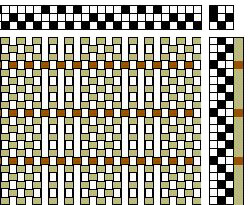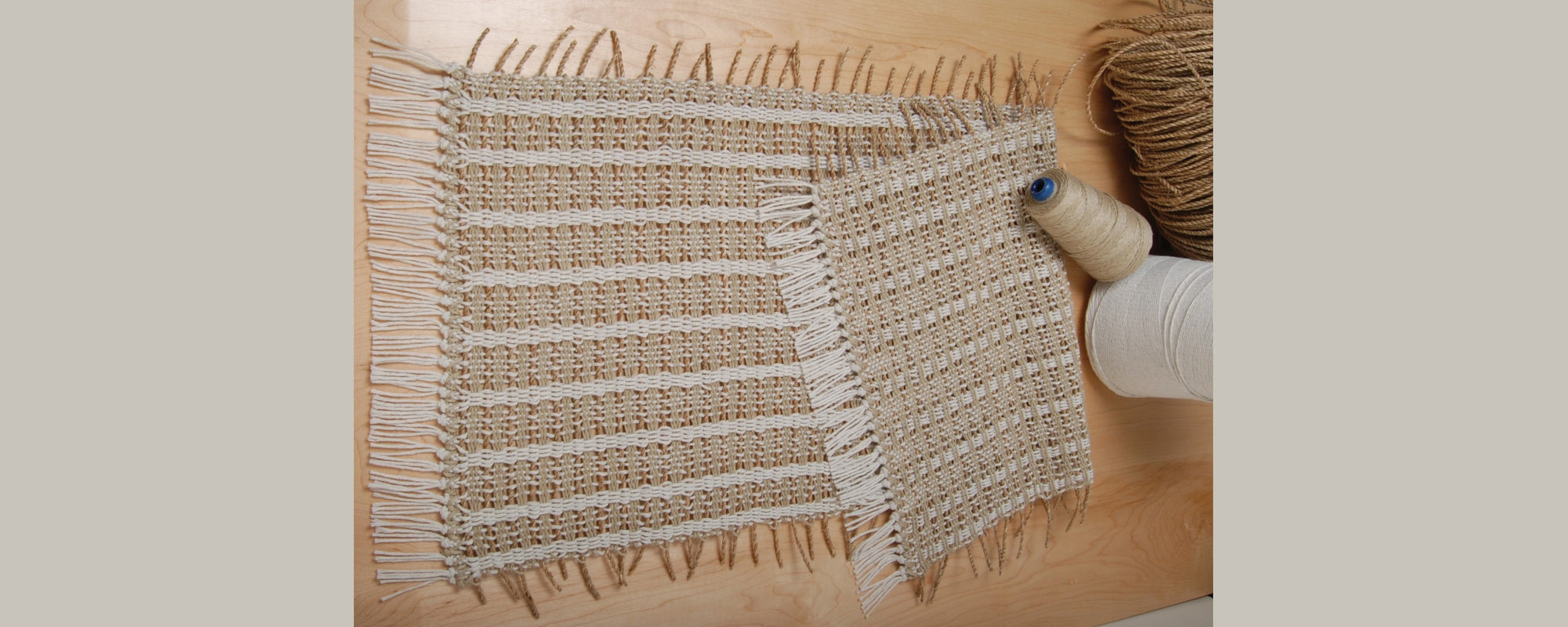Nautical Table Runner
Designed by Jane Patrick and Cei Lambert; woven by Cei Lambert
This table runner features natural colors and subtle variations. The linen and sea grass lend a distinctly nautical feel when woven with poly/cotton string. This table runner has a wealth of texture and dimension. The warp floats create interesting stripes and the final product has a unique and intriguing plaid effect. Enjoy experimenting with various warp float lengths and sea grass fringes to make your runner personalized and tailored for your table!
Project Specs
Weave structure: plain weave with warp floats and deflected wefts
Warp length: 2 yards, allows for 36" table runner length and loom waste
Warp ends: 104
Width in reed: 13"
EPI: 8
PPI: 10
What You'll Need
- Warp: Cable Poly/Cotton 8-ply at 800 yd/lb is more of an industrial supply material than a yarn. It’s similar to butcher string. Look for poly/cotton twine at your hardware store or shipping supply shop.
-
Weft: 8/5 Natural Linen at 520 yd/lb (ours is from Yarn Barn)
Size 0 Sea grass at 225 yd/lb -
4-shaft loom with at least 13” weaving width
-
8 dent reed
-
shuttle
-
pick-up stick
-
weighted tapestry beater
Materials
Equipment
Directions
Warp according to the weaving draft.

To start weaving, se your linen weft and leave a long tail to hemstitch the end of the piece. Weave three picks of plain weave with your linen. Hemstitch the end using a ‘three up, three over’ pattern.
In the draft above, the brown weft denotes the thicker sea grass and the khaki weft indicates linen. The draft looks balanced, but you will achieve the pictured weave effects by using a weighted tapestry beater to pack in the linen weft. The thickness of the sea grass also creates ridges in the fabric. Weave each sequence of 5 picks of linen, beating as usual, then beat by hand with the tapestry beater, evenly across the width of the fabric. You should see a slight curve or honeycomb effect to the weave. Do not cut the linen each time you finish the linen pattern sequence and beat. Instead, leave the tail attached to the shuttle, then wrap the linen around the pick of sea grass to ‘lock’ the selvedge. This will secure the initial pick of linen for the next sequence and adds a fun look.
At the end of the piece, after inserting a final pick of sea grass, weave another three picks of plain weave in linen. Hemstitch the end.
Finishing: This project will not shrink much due to the rigidity of the materials. There will be a good amount of softening in the linen, which will continue over time. We steamed this fabric with high heat and a press cloth. You can cut the end fringe and sea grass fringe to any length, keeping in mind that the sea grass needs to stick out 1-2 inches to be secure.

